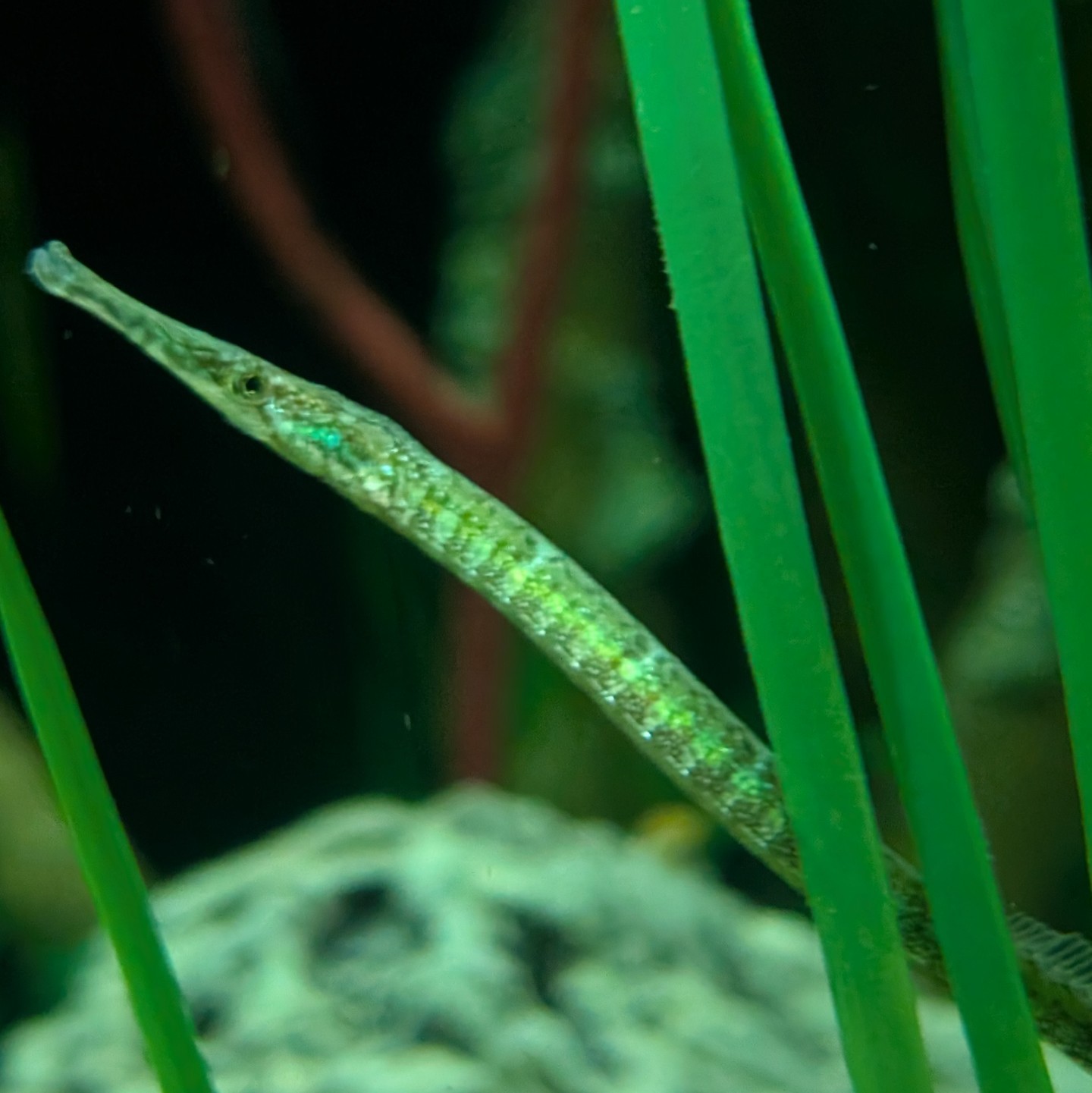- The striking color transformation of the Dusky Pipefish from bright yellow to brownish-green as they mature.
- The unique reproductive role of male Dusky Pipefish, who carry and hatch the eggs in a specialized pouch.
- The ecological significance and habitat of the Dusky Pipefish in aquatic ecosystems.
- The conservation status and environmental challenges faced by the Dusky Pipefish.
- Insights into zoo management and wildlife conservation efforts for the Dusky Pipefish species.
The wondrous transformation and life of the Dusky Pipefish offer insights into the complexity and beauty of aquatic life. These slender fish begin their journey in bright yellow attire, capturing attention with their vibrant hue. As they grow, their skin adapts a more subdued brownish-green tone. This fascinating color change is more than just aesthetic. It plays a vital role in their survival. The yellow pigmentation of juveniles likely serves as camouflage in sunlit, shallow waters where they begin their lives. As the pipefish mature, transitioning into deeper and more turbid waters, the brownish-green hue offers improved concealment from predators. This adaptability highlights the evolutionary strategies that Dusky Pipefish have developed to thrive in varied aquatic environments.
Adding to their allure is the Dusky Pipefish’s unique reproductive strategy, which challenges traditional perceptions of gender roles in the animal kingdom. In these fish, it is the male that takes on the pregnancy. Males possess a specialized brood pouch located under their tail where females deposit their eggs. The male carries these eggs until they are ready to hatch, thereby controlling optimal conditions for the development of the young. This remarkable strategy not only signifies an evolutionary adaptation for species survival but also underscores the biological wonders present in aquatic life. The male’s role in nurturing ensures higher survival rates of the offspring, thus stabilizing the population in the ecological niche they occupy.
Dusky Pipefish can be found along coastal regions, thriving in both saltwater and brackish environments. They often inhabit seagrass beds and areas with submerged vegetation, where they can easily find sustenance in the form of tiny crustaceans and plankton. Their slender bodies and coloration allow them to blend seamlessly into their surroundings as they forage. This ecological role serves both themselves and the broader environment in which they reside. They are both predator and prey, contributing to the balanced dynamics of these aquatic systems. The presence of Dusky Pipefish is often an indicator of a healthy aquatic ecosystem due to their need for clean, vegetated waters.
Despite their resilience, Dusky Pipefish face numerous environmental challenges that threaten their populations. Coastal development, pollution, and climate change are altering their natural habitats, leading to declining numbers in certain areas. The destruction of seagrass beds, a critical component of their habitat, is particularly concerning. Conservation efforts are essential to maintain the delicate balance of ecosystems where Dusky Pipefish are native. It is crucial to raise awareness about their plight and promote environmental policies that protect their habitats. By advancing conservation strategies, we can help safeguard these unique creatures for future generations.
Zoos and aquariums play a vital role in the preservation of the Dusky Pipefish by offering educational programs and conducting research to better understand their ecology and reproductive biology. These institutions have also spearheaded breeding programs aimed at creating sustainable populations outside their natural habitats. Through captivity, researchers gather invaluable data that assists in the wild repopulation efforts and further understanding of the species’ needs. This knowledge is then shared globally to enhance local conservation actions that can be adopted by communities around their natural habitats.
Educating the public about the Dusky Pipefish is equally imperative. By increasing knowledge and appreciation of this species, individuals and communities are more likely to engage in conservation practices. Interactive exhibits and talks offered by zoos and aquatic centers can inspire a generation to value these unique ecology warriors and partake in efforts to secure their future.
Dusky Pipefish’s journey from brilliant yellow youth to brownish-green adulthood is a study of adaptation and survival. Their extraordinary reproductive role stands as a fascinating example of the diversity of life strategies among aquatic organisms. Despite facing challenges, their story is one of perseverance and ecological importance. With continued conservation efforts and education, the vitality of Dusky Pipefish ecosystems can be preserved, demonstrating the power of human action in fostering environmental stewardship.
*****
Source Description
🌊🐠 Dusky Pipefish Glow Up! 🐠🌊
These slender swimmers start off bright yellow before shifting to a brownish-green as they grow. But here’s the real plot twist—male pipefish carry the eggs in a pouch under their tail until they’re ready to hatch! Talk about dad goals. 💛👶🐠

